Related Research Articles
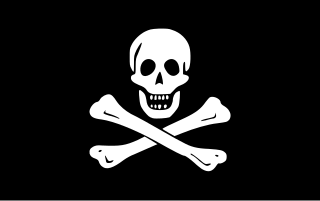
Piracy is an act of robbery or criminal violence by ship or boat-borne attackers upon another ship or a coastal area, typically with the goal of stealing cargo and other valuable goods. Those who conduct acts of piracy are called pirates, vessels used for piracy are pirate ships. The earliest documented instances of piracy were in the 14th century BC, when the Sea Peoples, a group of ocean raiders, attacked the ships of the Aegean and Mediterranean civilisations. Narrow channels which funnel shipping into predictable routes have long created opportunities for piracy, as well as for privateering and commerce raiding. Historic examples include the waters of Gibraltar, the Strait of Malacca, Madagascar, the Gulf of Aden, and the English Channel, whose geographic structures facilitated pirate attacks. The term piracy generally refers to maritime piracy, although the term has been generalized to refer to acts committed on land, in the air, on computer networks, and, outer space. Piracy usually excludes crimes committed by the perpetrator on their own vessel, as well as privateering, which implies authorization by a state government.
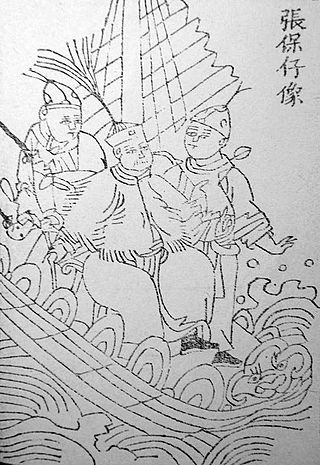
Cheung Po Tsai was a navy colonel of the Qing dynasty and former pirate. "Cheung Po Tsai" literally means "Cheung Po the Kid". He was known to the Portuguese Navy as Quan Apon Chay during the Battle of the Tiger's Mouth.
Zheng Yi was a powerful Chinese pirate operating from Guangdong and throughout the South China Sea in the late 1700s.

Admiral of the Fleet The Honourable Sir Henry Keppel was a Royal Navy officer. His first command was largely spent off the coast of Spain, which was then in the midst of the First Carlist War. As commanding officer of the corvette HMS Dido on the East Indies and China Station he was deployed in operations during the First Opium War and in operations against Borneo pirates. He later served as commander of the naval brigade besieging Sebastopol during the Crimean War. After becoming second-in-command of the East Indies and China Station, he commanded the British squadron in the action with Chinese pirates at the Battle of Fatshan Creek when he sank around 100 enemy war-junks. He subsequently took part in the capture of Canton during the Second Opium War.

The South Sea Fleet, concurrently the Southern Theater Command Navy (南部战区海军), is one of the three fleets of the People's Liberation Army Navy of China. Responsible for South China Sea, the fleet provides naval forces to the Southern Theater Command. The fleet is headquartered in Zhanjiang, Guangdong, China.

Zheng Yi Sao, also known as Ching Shih, was a Chinese pirate leader who was active in the South China Sea from 1801 to 1810.

Shap-ng-tsai was a Chinese pirate active in the South China Sea from about 1845 to 1859. He was one of the two most notorious South China Sea pirates of the era, along with Chui A-poo. He commanded about 70 junks stationed at Dianbai, about 180 miles west of Hong Kong. Coastal villages and traders paid Shap-ng-tsai protection money so they would not be attacked. Chinese naval ships that pursued the pirate were captured and their officers taken captive and held for ransom. The Chinese government offered him a pardon and the rank of officer in the military but he did not accept.
Lai Choi San (meaning Mountain of Wealth) was a Chinese pirate active in the 1920s and 1930s. Her historicity, or at the very least the historicity of most of what is known of her, is disputed since the main source on her life is the 1931 report I Sailed with Pirates by Aleko Lilius, a journalist of dubious repute.
The Battle of Liaoluo Bay took place in 1633 off the coast of Fujian, China; involving the Dutch East India Company (VOC) and the Chinese Ming dynasty's navies. The battle was fought at the crescent-shaped Liaoluo Bay that forms the southern coast of the island of Kinmen. A Dutch fleet under Admiral Hans Putmans was attempting to control shipping in the Taiwan Strait, while the southern Fujian sea traffic and trade was protected by a fleet under Brigadier General Zheng Zhilong. This was the largest naval encounter between Chinese and European forces before the Opium Wars two hundred years later.
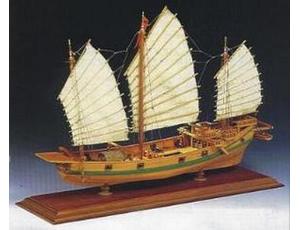
The Battle of Ty-ho Bay was a significant naval engagement in 1855 involving the United Kingdom and United States against Chinese pirates. The action off Tai O, Hong Kong was to rescue captured merchant vessels, held by a fleet of armed war-junks. British and American forces defeated the pirates in one of the last major battles between Chinese pirate fleets and western navies. It was also one of the first joint operations undertaken by British and American forces.
The Battle of Sincouwaan, also known as Battle of Veniaga Island was a naval battle between the Ming dynasty coast guard and a Portuguese fleet led by Martim Afonso de Mello that occurred in 1522. The Ming court threatened to expel Portuguese traders from China after receiving news that the Malacca Sultanate, a Ming tributary, had been invaded by the Portuguese. In addition, the Portuguese had been purchasing slaves on the Chinese coast, to sell in Portuguese Malacca. Portuguese traders were executed in China and a Portuguese embassy was arrested, with their freedom promised on the condition that the Portuguese returned Malacca to its sultan. Martim Afonso de Mello arrived at the Pearl River but was blockaded by a Ming fleet despite his offers of amends. After two weeks without being able to gain a foothold in China they decided to run the blockade and managed to escape with the loss of two ships and several dozen men. The battle was fought off the northwestern coast of Lantau Island, Hong Kong at a location called Sai Tso Wan today.

The Battle of the Leotung was a British victory against an overwhelming fleet of Chinese pirate ships. In 1855 the Royal Navy launched a series of operations into the Gulf of Leotung and surrounding area to suppress piracy, several battles were fought and hundreds of pirates were killed.

The Battle of Tonkin River was a major naval battle fought in northern Vietnam between the pirates of Shap Ng-tsai and the British Royal Navy with aid from the Qing Chinese navy and the Tonkinese. The 1849 expedition led to the destruction of Shap Ng-tsai's fleet and the loss of over 2,000 men. The battle occurred over a three-day period at the mouth of the Tonkin River, near present-day Hai Phong.

The Battle of Tysami was a military engagement involving a warship from the British China Squadron and the Chinese pirates of Chui A-poo. It was fought in September 1849 off Tysami, Harlaim Bay, China, and ended with a Royal Navy victory. It was also the precursor engagement to the larger Battle of Pinghoi Creek where Chui A-poo's fleet was destroyed.

The Battle of Nam Quan was fought in 1853 as part of a British anti-piracy operation in China. A Royal Navy sloop-of-war encountered eight pirate ships near Nam Quan and defeated them in a decisive action with help from armed Chinese civilians on land.
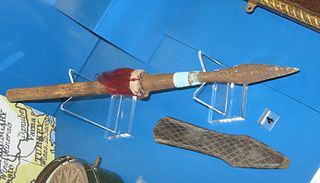
The Irene incident of 1927 was a significant event of the British anti-piracy operations in China during the first half of the 20th century. In an attempt to surprise the pirates of Bias Bay, about sixty miles from Hong Kong, Royal Navy submarines attacked the merchant ship SS Irene, of the China Merchants Steam Navigation Company, which had been taken over by the pirates on the night of 19 October. The British were successful in thwarting the hijacking though they sank the ship.
Lu Tang, courtesy name Ziming, was an army officer of the Ming dynasty in China. He participated in the suppression of the Jiajing wokou raids from 1547 to 1562, during which he fought the Portuguese smugglers who settled in pirate havens on the outlying islands of the Chinese coast. The Portuguese called him Luthissi, a combination of his surname Lu and the position he held, "dusi" (都司), or regional military commander. As a seasoned general, Lu Tang was a skilled strategist but suffered many setbacks on the battlefield. His career was not only affected by his military fortunes, but also the fates of the numerous commanders that he served.
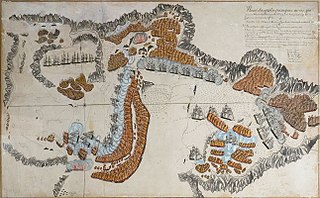
The Battle of the Tiger's Mouth was a series of engagements between a Portuguese flotilla stationed in Macau, and the Red Flag Fleet of the Chinese pirate Ching Shih, led by her second-in-command, Cheung Po Tsai - known to the Portuguese as Cam Pau Sai or Quan Apon Chay. Between September 1809 and January 1810, the Red Flag Fleet suffered several defeats at the hands of the Portuguese fleet led by José Pinto Alcoforado e Sousa, within the Humen Strait - known to the Portuguese as the Boca do Tigre - until finally surrendering formally in February 1810. After her fleet surrendered, Ching Shih surrendered herself to the Qing government in exchange for a general pardon, putting an end to her career of piracy.

Zhang Wendan is a retired vice admiral of the Chinese People's Liberation Army Navy. He served as Chief of Staff of the PLA Navy from January 2018 to December 2019, and previously served as Chief of Staff and Deputy Commander of the South Sea Fleet, Deputy Chief of Staff of the Southern Theater Command, and Commander of the North Sea Fleet (2017–2018). He commanded the PLA Navy's fifth Gulf of Aden anti-piracy task force in 2010.

Huang Bamei, also known as Huang P’ei-mei or Huang P'emei, was a Chinese pirate leader who served as a naval commander in the Second Sino-Japanese War (1937–1945) and the second phase of the Chinese Civil War (1945–1949), aligned with the Republic of China but at times of dubious allegiance. At the height of her power she commanded a force of 50,000 people and 70 ships and was considered the most famous pirate in China. She earnt the nickname "Two Guns" owing to her use of two guns in battle.
References
- 1 2 3 4 5 6 7 Gosse, Philip (2012). The History of Piracy. Courier Corporation. p. 281. ISBN 978-0-486-14146-6.
- ↑ Salmonson, Jessica Amanda (2015). "Hon-cho Lo". The Encyclopedia of Amazons: Women Warriors from Antiquity to the Modern Era. Open Road Media. ISBN 978-1-4532-9364-5.
- 1 2 3 4 5 6 7 8 9 10 Stanley, Jo; Chambers, Anne; Murray, Dian H.; Wheelwright, Julie (1995). Bold in Her Breeches: Women Pirates Across the Ages. Pandora. pp. 243–244. ISBN 978-0-04-440892-5.
- 1 2 "From Empire to Enlightenment". Women Our History. Dorling Kindersley Limited. 2022. ISBN 978-0-241-44438-2.
- 1 2 Spinelli, Anna (2003). Tra l'inferno e il mare: breve storia economica e sociale della pirateria (in Italian). Fernandel Scientifica. pp. 218–219. ISBN 978-88-87433-39-5.
- 1 2 3 4 5 McCloskey, Richard Gordon (August 1947). "Answers". American Notes and Queries . 7 (1): 74.
- 1 2 3 Zuidhoek, Arne (2022). The Pirate Encyclopedia: The Pirate's Way. BRILL. p. 398. ISBN 978-90-04-51567-3.
- ↑ Klausmann, Ulrike; Meinzerin, Marion; Kuhn, Gabriel (1997). Women Pirates and the Politics of the Jolly Roger. Black Rose Books. p. 56. ISBN 978-1-55164-059-4.
- ↑ Verrill, Alpheus Hyatt (1989) [1923]. The Real Story of the Pirate. The Rio Grande Press, Inc. pp. 373–374. ISBN 0-87380-167-9.

